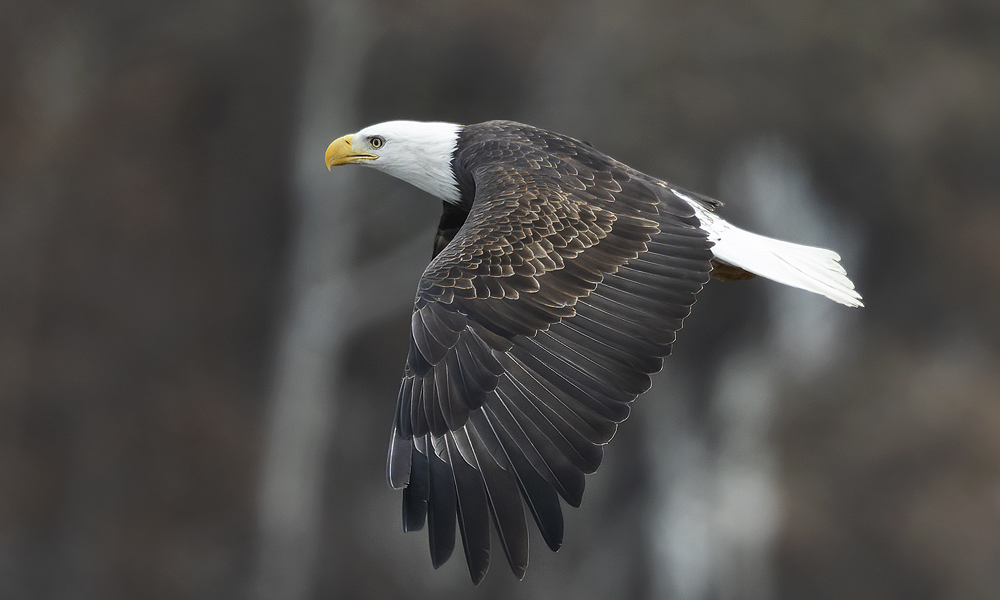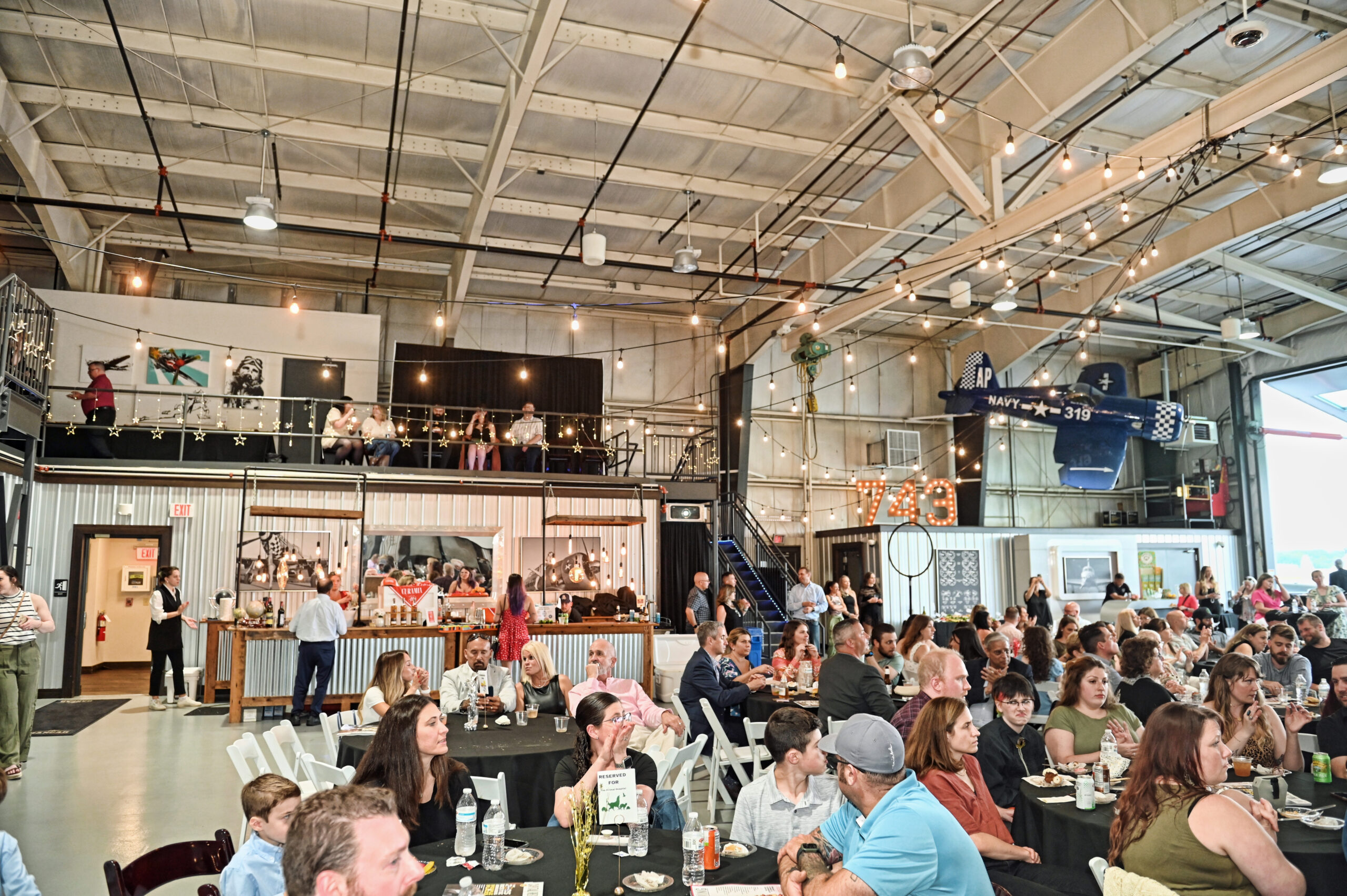Forget about driving up to the Adirondacks to catch a glimpse of America’s majestic national bird. Heck, you don’t even have to leave the Capital Region. Sandwiched between the urban sprawl of Waterford, Cohoes and Troy is a little bald eagle hotspot called Peebles Island. Barely 10 miles from downtown Albany, this 190-acre state park—located at the confluence of the Mohawk and Hudson rivers—is home to a pair of nesting bald eagles that have caught the attention of a local group of wildlife photographers and bird enthusiasts.
“I’ve always been interested in nature and I’ve been taking photos of wildlife for a long time,” says Curt Morgan, founder of the group. The network of mostly local birders and nature enthusiasts share their images, videos and photography tips on a Facebook page called Peebles Eagles, which has also been a catalyst for a number of spontaneous gatherings such as bird walks, wildlife and photography information sessions, and even rare bird trips. Morgan, a biology major who worked as a minister in the Capital Region for 30 years, started the group in July 2020, but has always had a passion for observing these feathered, flying friends. “People don’t know that these amazing raptors are in the Capital Region,” he says. “And I wanted to share this awesome site with them.”

Morgan discovered the little secret in the spring of 2020 when he joined a bevy of wildlife photographers that had converged on Peebles Island to film bald eaglet fledglings. Bald eagles mate for life, and the stretch of the Mohawk River from Vischer Ferry down to where it meets the Hudson at Peebles Island is rich with fish—the bald eagle’s main food source—making it an ideal nesting spot. “Within five miles of that island there are probably four or five eagle nests,” Morgan says. “Back in 2020, we were there for several weeks photographing and filming this event. When the others finally left, I said to them, ‘Let me open a Facebook page, and it’ll give us an opportunity to post shots and maintain our friendship.’”
And that’s exactly what happened. Flash forward three years and Peebles Eagles has more than 2,600 members who’ve already shared some 70,000 photos. And it’s not just raptors—the page includes other birds and wildlife from the region and beyond. “I always tell people, ‘If you can’t make it to Peebles Island, post your wildlife wherever you’re located,’” Morgan says. “The group really blossomed during Covid lockdown because people were gathering outside and looking to maintain some kind of connection to community. It’s not people holding onto trade secrets. It’s photographers serving and helping people appreciate wildlife and grow their photography skills.”

That open-minded attitude has attracted birders and nature enthusiasts from all over the Capital Region, the United States, Canada and more than 10 other countries. One of those members is renowned Ballston Spa–based nature photographer Jeff Nadler, whose avian images and written articles have appeared in Cornell’s Living Bird magazine, Bird Watcher’s Digest, Adirondack Life, and even National Geographic Complete Birds of North America. “It’s a pretty good group who all socialize together,” says Nadler, who joined last year. Because of Peebles Eagles, he’s already seen some cool stuff, too. “The week after Christmas, I’d heard [in the Facebook group] that people were seeing 30 to 40 bald eagles instead of the usual six or eight,” he says. “So I drove down and was just in awe; from the Route 9 Bridge to Cohoes itself there were 40 eagles. And that lasted only a week!” (Fun fact: Large congregations of raptors can occur in the wintertime because eagles from farther north will fly south to find open water; in these summer months, eagle offspring are readying to leave the nest.)
Another important member of the group is Peter Nye, the New York conservationist largely responsible for the raptor’s resurgence in the northeastern United States. The bald eagle has been the national bird since 1782 (before the Constitution was written and a year before the nation won independence), but in the mid-20th century, the insecticide DDT nearly wiped out the species. With a team of experts, Nye flew in eaglets from Alaska to sites outside of Albany, where they set up mock nests to feed and rear those young birds before releasing them into the wild. Their winged descendants spread throughout the northeast and became an incredible conservation comeback story.

“We’ve had bald eagle territories in New York State that have been active for well over 75 years now,” says Nye, who used to run New York’s Endangered Species Program. Throughout his career, Nye visited bald eagles throughout the state and banded every baby bird of prey he could—“Well over 1,000 chicks,” he says. Peebles Eagles members have taken over some of Nye’s work with their own volunteer efforts. “They’ve been very helpful in carrying on the monitoring of a whole bunch of eagle nests,” says Nye. “Citizen scientists can be very important.”

In fact, over the last two-plus years, Peebles Eagles members have voluntarily monitored nests in the region for the Department of Environmental Conservation, reported different banded eagles passing through the area to US Fish and Wildlife (which helps tell the history of each eagle that has been fitted with an individual band), and orchestrated letter-writing campaigns to discourage further development of known eagle habitats. “The caveat,” Nye says about utilizing citizen scientists, “is to remember that species protection above all is most necessary. Don’t disturb your subject.”
That’s a tenet Morgan has been sure to cultivate among his eaglers on Peebles Island and the surrounding area. “There is a rule of thumb: Maintain at least 300 feet from an eagle,” Morgan says. “When you’re out looking for bald eagles you see all kinds of great sites and wildlife. Just about any day, I can go out and find a number of bald eagles.” And it’s the work of conservationists such as Nye and invested citizens like the members of Peebles Eagles that will ensure those eagles stick around for many years to come.








